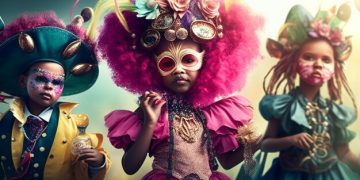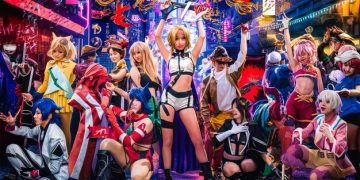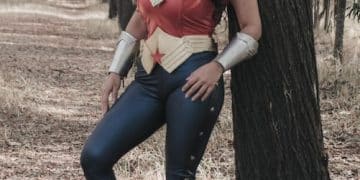The Ultimate Guide to Cosplay: Transforming into Your Favorite Characters
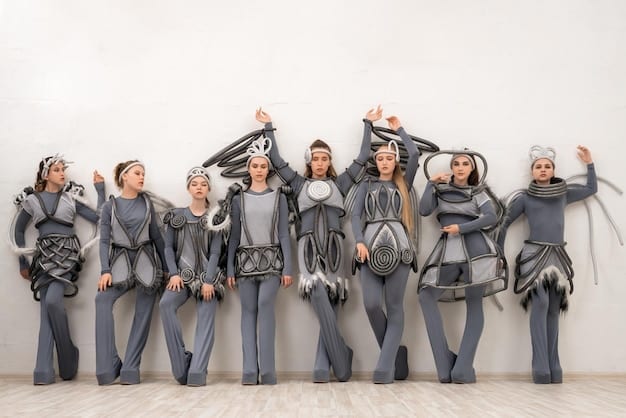
Cosplay, short for “costume play,” is a vibrant subculture where enthusiasts create and wear costumes to represent specific characters from various forms of media, including anime, manga, video games, and comic books.
Have you ever dreamed of embodying your favorite character? Cosplay makes that dream a reality. It’s more than just dressing up; it’s an art form, a community, and a celebration of all things geeky. Let’s dive into the exciting world of cosplay!
What is Cosplay? A Deep Dive into the Culture
Cosplay is a performance art where individuals don costumes and accessories to represent characters. This creative expression goes beyond Halloween costumes, focusing on replicating the character’s details and bringing them to life. But what truly defines cosplay as a culture?
The Roots of Cosplay
The origins of cosplay can be traced back to the science fiction and comic book conventions of the late 1930s. However, it was in Japan during the 1970s that cosplay truly began to flourish with events like Comiket providing dedicated spaces for cosplayers to showcase their creations.
Cosplay as a Form of Expression
Cosplay isn’t just about wearing a costume; it’s a deeply personal form of expression. It allows individuals to connect with characters they admire, explore their own creativity, and express their identity. The act of embodying a character can be incredibly empowering.
- Community: Cosplay builds communities where fans connect, share ideas, and support each other.
- Craftsmanship: It encourages the development of various skills, from sewing to prop making.
- Performance: Many cosplayers engage in performances, adding another layer of depth to the art form.
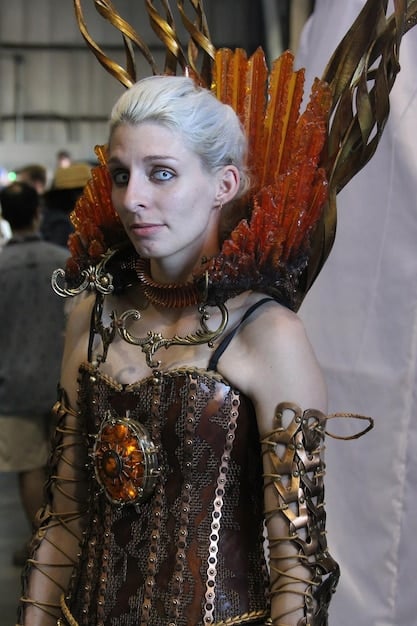
In conclusion, cosplay is a multifaceted culture that blends creativity, community, and passion. It’s a way for fans to go beyond passive enjoyment and actively participate in the worlds they love, making it a dynamic and evolving art form.
Getting Started: Essential Cosplay Tips
If you’re new to cosplay, it can seem overwhelming. Where do you even begin? Here are essential tips to start your cosplay journey on the right foot.
Choosing Your First Character
Selecting the right character is crucial for a successful first cosplay. Consider characters you genuinely love and whose costumes seem manageable for your current skill level. Starting simple ensures a smoother experience.
Basic Materials and Where to Find Them
Understanding basic materials can make a big difference in your cosplay quality. Common materials include fabrics like cotton, felt, and pleather, as well as EVA foam for armor and props. Look for local fabric stores, craft shops, and online retailers for the best deals.
- Fabric: Choose materials that closely match your character’s outfit.
- EVA Foam: Perfect for creating lightweight and durable armor pieces.
- Worbla: A thermoplastic that is great for detailed props and armor.
Starting with a simple project like a character with minimal armor or intricate details can help you build confidence and skills. Don’t be afraid to ask for help from more experienced cosplayers; the community is generally very supportive and willing to share knowledge.
Cosplay on a Budget: Affordable Options and DIY Ideas
Cosplay doesn’t have to break the bank. There are plenty of ways to create amazing costumes without spending a fortune. From thrifting to DIY, here are some budget-friendly cosplay ideas.
Thrifting for Hidden Treasures
Thrift stores are goldmines for cosplay materials. You can often find clothing items that can be repurposed or altered to match your character’s outfit. Keep an open mind and a creative eye while browsing.
DIY Props and Armor: A Step-by-Step Guide
Creating your own props and armor can save a significant amount of money. EVA foam is an excellent material for DIY armor, as it’s affordable, lightweight, and easy to work with. There are countless online tutorials to guide you through the process.
- EVA Foam Armor: Use templates, heat shaping, and paint to create realistic armor pieces.
- Cardboard Creations: Cardboard can be used for creating base structures for props.
- Upcycled Materials: Repurpose old containers and items to create detailed accessories.
Remember, the goal is to enjoy the process and showcase your creativity. With some resourcefulness and effort, you can create a stunning cosplay without overspending.
Advanced Cosplay Techniques: Mastering the Craft
Once you’ve mastered the basics, you might want to explore more advanced cosplay techniques. These skills can take your costumes to the next level and make you stand out at conventions.
Working with Wigs: Styling and Maintenance
Wigs are essential for many cosplays, but styling them can be challenging. Learn basic wig styling techniques like trimming, layering, and using heat to achieve the desired look. Proper maintenance ensures your wig stays in good condition.
Sewing Skills for Complex Costumes
Sewing is a fundamental skill for creating complex costumes. Mastering different sewing techniques, like pattern making, fitting, and using a sewing machine, allows you to bring even the most intricate designs to life.
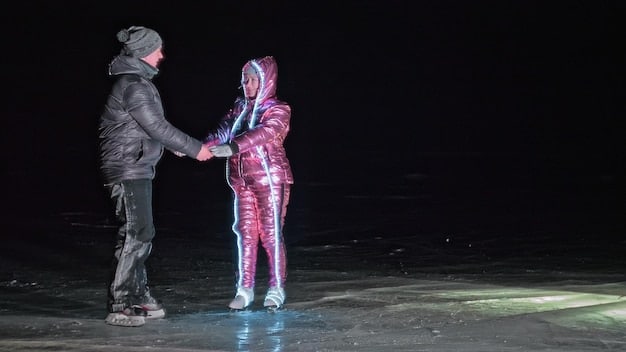
- Pattern Making: Learn to draft your own patterns for custom-fit costumes.
- Fabric Manipulation: Experiment with techniques like draping and pleating to add texture and dimension.
- Machine Mastery: Familiarize yourself with different stitches and settings on your sewing machine.
Advancing in cosplay requires dedication and continuous learning. Take advantage of online tutorials, workshops, and experienced cosplayers to hone your skills and push your creative boundaries.
Cosplay Photography: Capturing the Magic
Cosplay photography is a crucial part of the experience. It allows you to showcase your hard work and creativity while capturing the essence of the character. Here are tips for creating stunning cosplay photos.
Working with Photographers: Building a Portfolio
Collaborating with photographers can elevate your cosplay. Look for photographers specializing in cosplay photography and build a portfolio showcasing your best costumes. A good photographer can capture the character’s personality and the details of your costume.
Posing Tips and Tricks for Memorable Shots
Posing is essential for bringing your character to life in photos. Study your character’s mannerisms, practice different poses, and experiment with angles and lighting to create dynamic and memorable shots. Confidence and character embodiment are key.
- Character Study: Understand your character’s personality and signature poses.
- Angle Awareness: Experiment with different angles to find the most flattering shots.
- Lighting: Natural light is often best, but learn to work with artificial lighting for indoor shoots.
Cosplay photography is a collaborative effort. By working with talented photographers and mastering posing techniques, you can create stunning visuals that capture the magic of your cosplay.
Navigating Cosplay Conventions: Etiquette and Safety
Cosplay conventions are exciting events where cosplayers gather to celebrate their passion. However, it’s essential to be aware of convention etiquette and safety guidelines to ensure a positive experience for everyone.
Convention Etiquette: Respect and Consideration
Respect and consideration are fundamental to convention etiquette. Always ask for permission before taking photos of cosplayers, be mindful of personal space, and avoid touching costumes without consent. Treating others with respect fosters a positive and welcoming environment.
Safety Guidelines and Best Practices
Safety should always be a priority at conventions. Be aware of your surroundings, stay hydrated, and take breaks when needed. If your costume restricts visibility or movement, have a friend assist you. Report any incidents or concerns to convention staff immediately.
- Consent is Key: Always ask before taking photos or touching costumes.
- Stay Hydrated: Conventions can be tiring, so drink plenty of water.
- Be Aware of Your Surroundings: Pay attention to pedestrian traffic and potential hazards.
Attending cosplay conventions is a unique and rewarding experience. By adhering to etiquette and safety guidelines, you can contribute to creating a positive and enjoyable event for all participants.
| Key Point | Brief Description |
|---|---|
| 🎭 Understanding Cosplay | Cosplay involves creating and wearing costumes to represent characters, blending creativity and community. |
| 🧵 Starting Cosplay | Choose a manageable character, gather basic materials like fabric and EVA foam, and seek help when needed. |
| 💰 Budget Cosplay | Explore thrifting, DIY props with EVA foam, and upcycled materials to save money. |
| 📸 Cosplay Photography | Collaborate with photographers and practice character-specific poses to capture memorable shots. |
FAQ about Cosplay
▼
The term “cosplay” is a portmanteau of the words “costume” and “play.” It was coined in Japan in the 1980s to describe the act of dressing up as characters, mainly from anime and manga.
▼
Start by considering characters you love and whose costumes seem manageable. Look for costumes with fewer intricate details and less armor. As you gain experience, you can tackle more complex designs.
▼
EVA foam is a popular choice for props due to its affordability and ease of use. Other good options include Worbla (a thermoplastic) and cardboard for base structures. Proper painting and finishing make these materials look realistic.
▼
Practice posing in character and study your character’s mannerisms. Collaborate with photographers and experiment with different lighting techniques. Pay attention to the background and overall composition of the shot.
▼
Politely ask them to delete the photo. If they refuse or if the situation is uncomfortable, report the incident to convention staff. Consensual photography is crucial, and conventions should provide a safe environment.
Conclusion
Cosplay is more than just dressing up; it’s about passion, creativity, and community. By understanding the basics, mastering advanced techniques, and respecting cosplay etiquette, you can fully immerse yourself in this vibrant subculture and bring your favorite characters to life.

